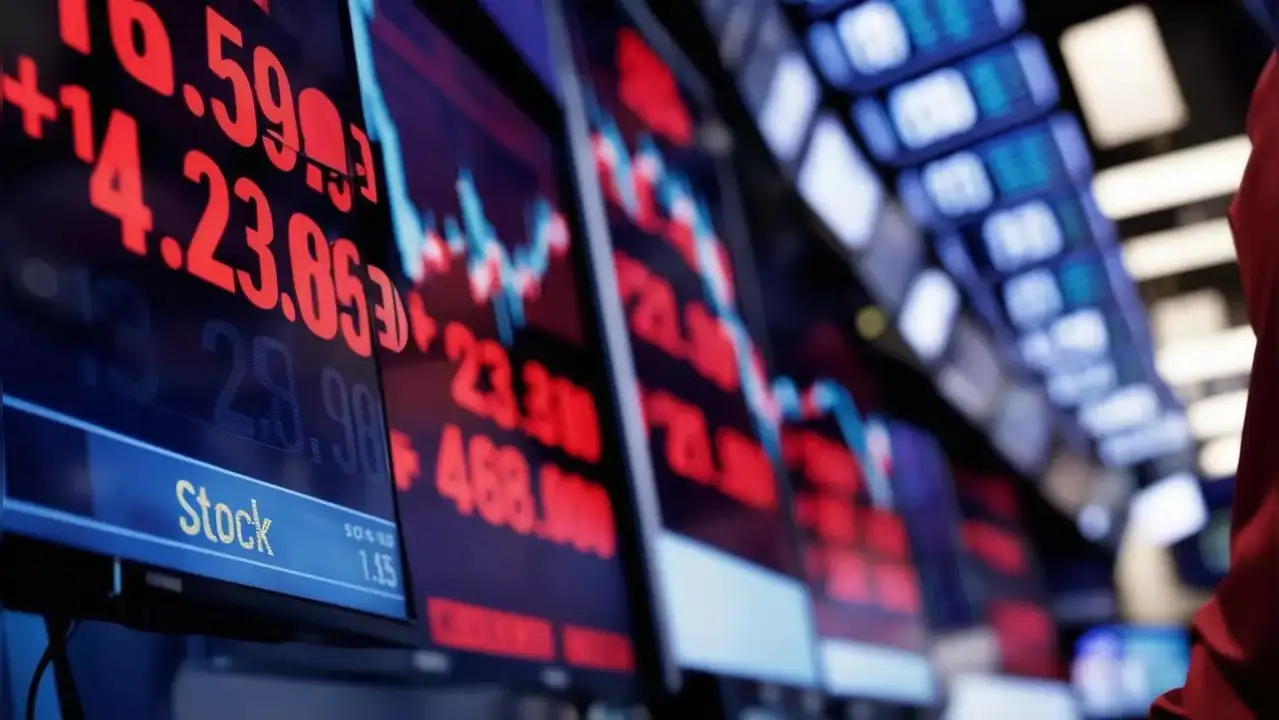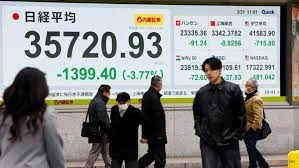Asian Markets in Freefall as US-China Trade War Escalates: Nikkei Plunges 5.6% Amid 145% Tariff Shock
Asian stock markets stumbled on Friday as anxiety over a full-scale US-China trade war prompted investors to seek shelter. Japan’s Nikkei 225 led the regional sell-off, dropping 5.6% in initial trading—its steepest one-day fall since the 2022 global inflation crisis—before trimming losses to 4.7% by noon. The chaos followed a White House statement late on Thursday confirming the overall US tariffs imposed on Chinese imports had risen to 145%, a sharp increase in a confrontation that now risks upsetting the teetering world economic recovery.

From Tokyo to Hong Kong, trading floors lit up red as the fear of prolonged economic decoupling between the world’s two biggest economies shook markets. The sell-off wiped out more than $500 billion in market value in Asia, highlighting the high stakes of a trade war with no apparent end.
The Trigger: Tariffs Hit 145%—What Does It Mean?
The most recent escalation involves President Donald Trump’s widening of Section 301 tariffs, a Cold War trade weapon resurrected in 2018 to respond to China’s perceived intellectual property theft and unfair subsidies. On Thursday, the White House announced new 25% tariffs on $18 billion of Chinese imports, including:
- Electric vehicles (EVs)
- Batteries and solar panels
- Semiconductors
- Critical minerals
Added to current obligations, the overall tariff rate on China’s targeted products now stands at an average of 145%, essentially pricing most exports out of the US market. China’s Commerce Ministry promised “forceful countermeasures,” threatening possible retaliatory attacks on US agriculture, Boeing jets, and Apple devices.
“This isn’t a trade skirmish—it’s economic mutually assured destruction,” warned Zhang Li, an economist based in Beijing. “Both sides are digging trenches for a long war.”
Market Carnage: A Region-by-Region Breakdown
Japan: Nikkei’s Nosedive and the Auto Sector Bloodbath
Japan’s Nikkei 225 bore the brunt of the sell-off, with automakers and tech giants leading losses:
- Toyota: -7.2% (Supply chain fears)
- Sony: -6.8% (Chinese component shortages)
- SoftBank: -5.9% (Alibaba stake devaluation)
The yen surged to ¥152 against the dollar as investors fled to safety, further pressuring export-reliant industries.
China: Shanghai Composite Slides 3.1%
China’s markets mirrored the gloom:
- EV Maker BYD: -8.5% (US tariff backlash)
- Semiconductor SMIC: -6.3% (Export restrictions)
- Tencent: -4.2% (Global growth concerns)
Broader Asia: No Safe Havens
- Hong Kong’s Hang Seng: -4.5%
- South Korea’s KOSPI: -3.8% (Samsung -5.1%)
- Taiwan’s TWSE: -4.2% (TSMC -6.7%)
“This is a liquidity crisis,” said Nomura strategist Takashi Hiroki. “Investors are dumping anything tied to global trade.”
Roots of the Crisis: From Tariffs to Tech Warfare
The present meltdown dates back to the unresolved tensions of the 2018–2020 US-China trade war, which ran its course with tariffs as high as 25% on $550 billion worth of merchandise. Although a Phase One deal temporarily halted hostilities, the Biden administration left most tariffs in place, casting them as a cudgel against China’s technological ambitions.
Trump’s return to office in 2024 reignited the conflict, with his administration adopting an even harder line:
- April 2024: Bans on Chinese EVs and AI software.
- May 2024: Sanctions on SMIC and Yangtze Memory.
- June 2024: 145% tariff announcement.
China has retaliated by:
- Restricting rare earth mineral exports.
- Launching anti-dumping probes into US pork and dairy.
- Accelerating “dual circulation” policies to reduce foreign reliance.
Sectoral Impacts: Who Bears the Brunt?
- Automakers: Japanese and German carmakers face double jeopardy—US tariffs on China-made parts and Beijing’s restrictions on combustion-engine vehicles.
- Tech: Semiconductor stocks cratered as TSMC and Samsung warned of delayed orders from Huawei and Xiaomi.
- Energy: Solar panel makers like Longi Green Energy tumbled 12% on US import bans.
- Consumer Goods: Apple slid 2% in after-hours trading on fears of iPhone restrictions in China.
Global Spillover: Europe and Emerging Markets Brace for Impact
The contagion spread swiftly:
- EU Stoxx 600: -2.3% (Automotive sector -4.1%)
- US Futures: Dow Jones -1.8% pre-market
- Emerging Markets: MSCI EM Index -3.4%
“Asia’s pain is the world’s pain,” said IMF Managing Director Kristalina Georgieva. “No economy is insulated from this shock.”
Expert Analysis: Is This a Correction or a Crash?
Bear Case: Morgan Stanley predicts a 20% correction in global equities if tariffs exceed 150%, citing supply chain paralysis and stagflation risks.
Bull Case: Goldman Sachs views the sell-off as “overblown,” arguing tech innovation and ASEAN trade diversification will cushion the blow.
“Markets are pricing in a worst-case scenario,” said JPMorgan’s Tai Hui. “But political posturing could give way to backroom deals.”
Historical Parallels: Lessons from Past Trade Wars
- 1930 Smoot-Hawley Tariffs: Aggravated the Great Depression, slashing global trade by 65%.
- 1980s Japan-US Auto Wars: Voluntary export limits stabilized relations but crippled Japan’s growth.
- 2018 US-China Conflict: Reduced bilateral trade by $100 billion but boosted Vietnam and Mexico.
“History shows trade wars have no winners—only survivors,” noted Harvard economist Kenneth Rogoff.
What’s Next: Three Possible Scenarios
- Escalation (40% Likelihood): Full decoupling as China bans rare earth exports and the US blacklists Chinese banks. Global GDP growth drops to 1.5%.
- Stalemate (50%): Protracted negotiations with periodic tariff hikes. Markets remain volatile.
- De-escalation (10%): Secret talks yield a truce before the 2024 US election. Tariffs roll back to 100%.
A Fragile Global Economy at a Crossroads
As Asian economies totter under the burden of 145% tariffs, the world is reminded of globalization’s vulnerability. For Japan, the Nikkei collapse is not just a market adjustment—it’s a call to action to diversify away from US-China trade. For policymakers, the way ahead requires reconciling economic security with interdependence that has driven growth for decades.
In the words of ex-US Treasury Secretary Hank Paulson: “A divided global economy is a poorer one.” If leaders pay attention to it, Friday’s crash will be just that—a blip. Otherwise, it’s the beginning of a new, perilous era.
Click Here to subscribe to our newsletters and get the latest updates directly to your inbox.

